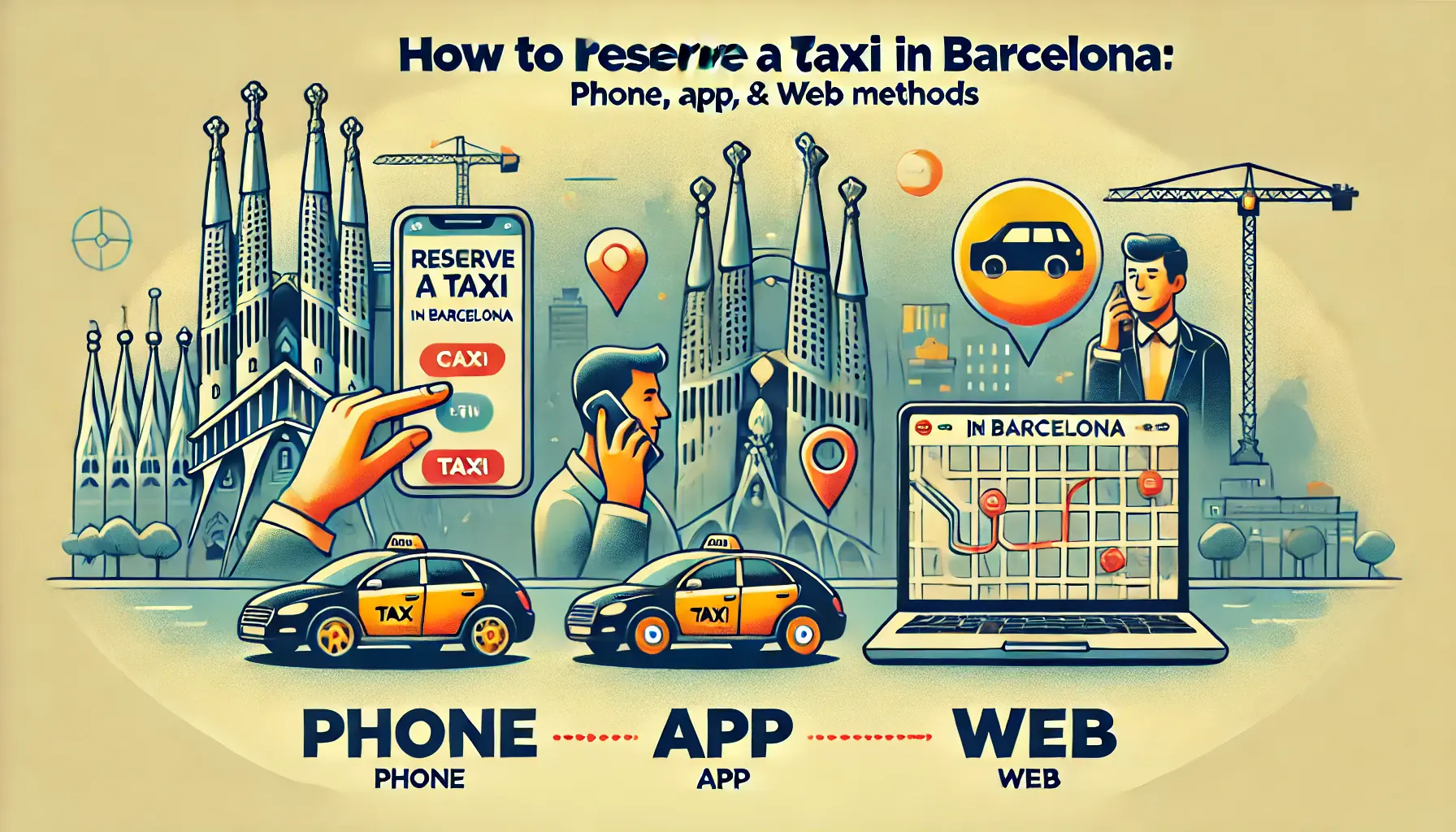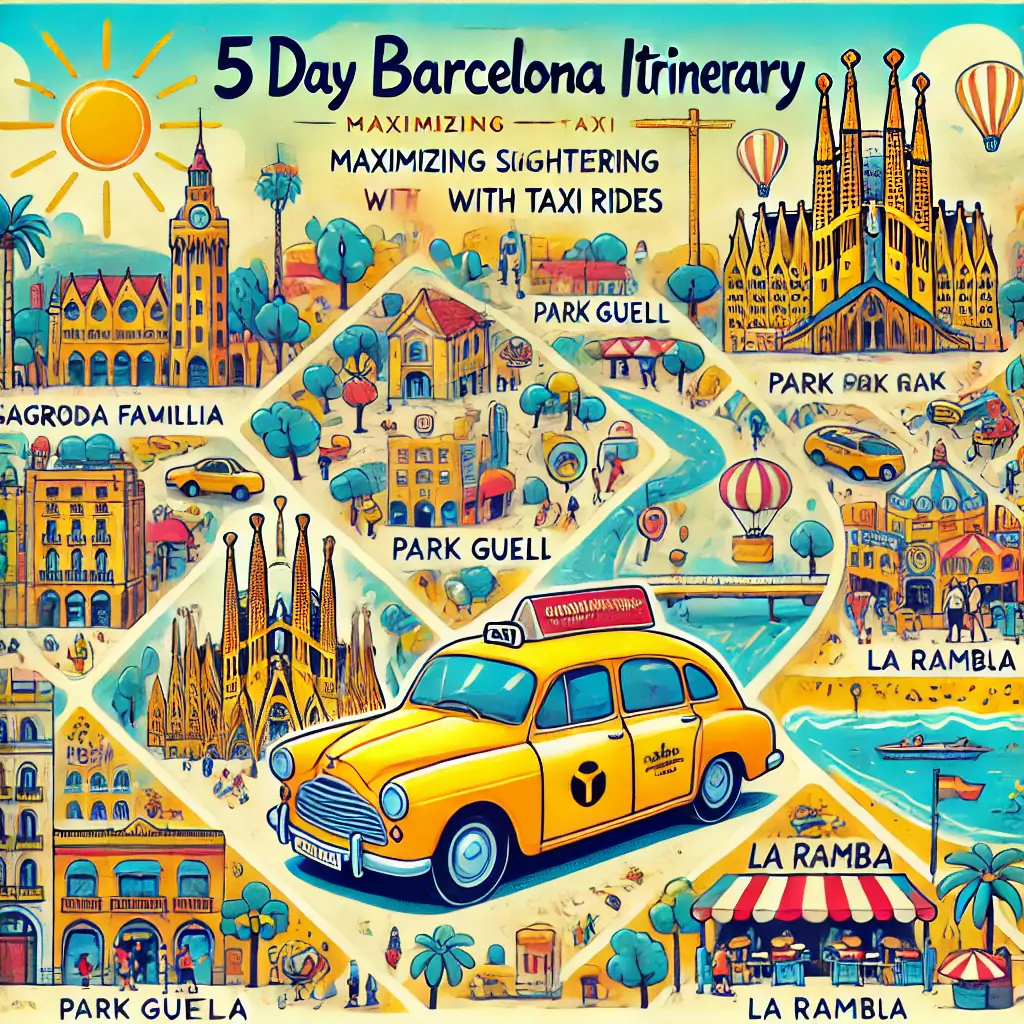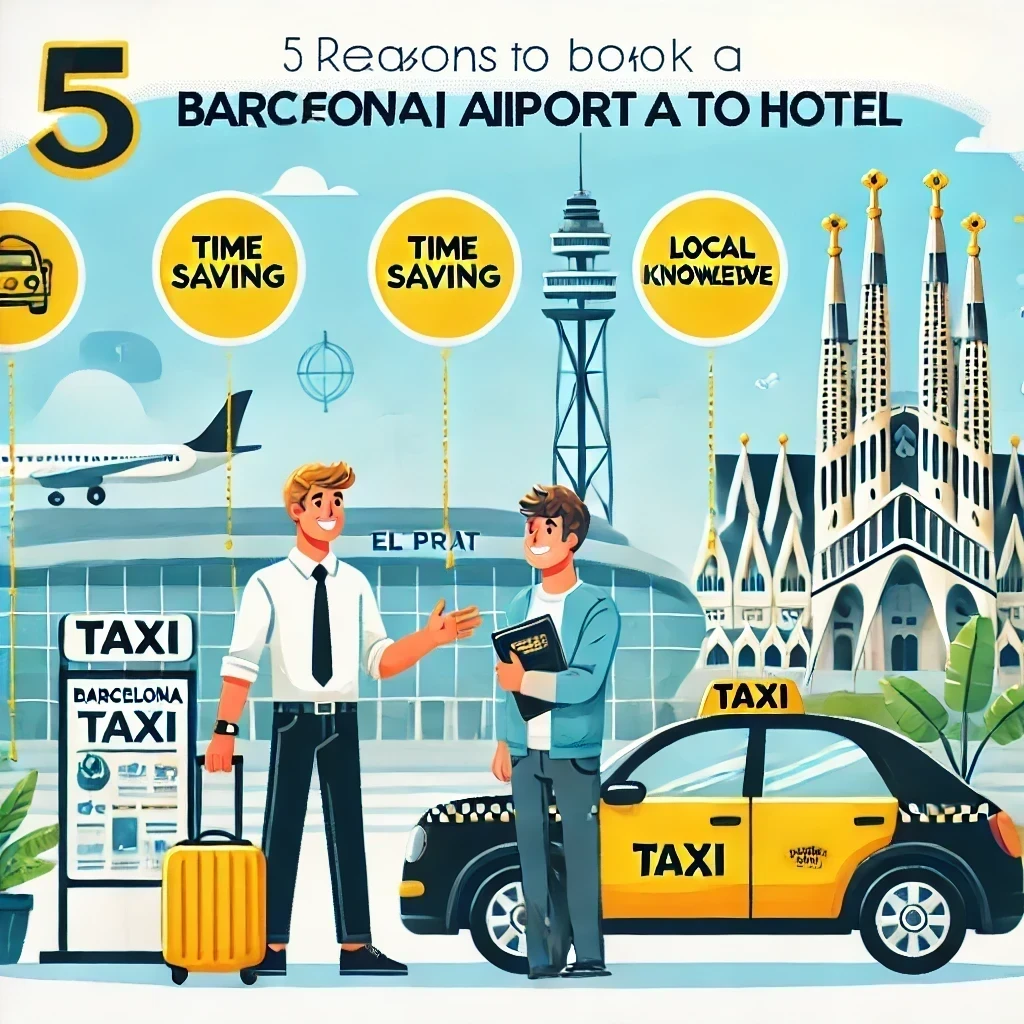Introduction
Barcelona, a bustling Mediterranean metropolis, has a rich history of evolving transportation options. From the vintage trams of the early 1900s to today’s sleek metro and taxi services, getting around Barcelona has never been easier. Choosing the right mode of transportation can significantly enhance your experience, affecting your budget, comfort, and ability to explore the city’s vibrant neighborhoods.
Overview of Transport in Barcelona
Barcelona offers a highly efficient, well-organized, and varied transport system. The city is served by a vast metro network, an extensive bus system, iconic black-and-yellow taxis, scenic tram lines, and a popular bike-sharing program known as Bicing. Integrated ticketing options, like the T-casual card, allow travelers to seamlessly switch between different modes. Whether you prefer underground convenience or scenic street-level rides, Barcelona caters to every traveler’s needs.
Benefits of Taking a Taxi in Barcelona
Ease and Door-to-Door Convenience
Taxis in Barcelona provide unmatched convenience with door-to-door service available 24/7. They are ideal for reaching destinations that are not easily accessible by public transport, such as remote beaches or mountain viewpoints, especially during odd hours when other services are scarce.
Comfort and Privacy
Traveling by taxi offers a private, comfortable, and air-conditioned environment. Unlike the metro or buses, there is no need to navigate crowds or worry about personal space. Taxis are especially beneficial when traveling with lots of luggage, young children, or after a long day of sightseeing.
Safety and Security
Barcelona’s taxi system is tightly regulated. Official taxis are metered and licensed, ensuring fair pricing and professional service. For those traveling late at night or unfamiliar with the city’s neighborhoods, taxis offer a safe and secure way to reach your destination without worry.
Disadvantages of Taking a Taxi in Barcelona
Higher Costs
Compared to public transport, taxis are significantly more expensive. Fares can climb quickly during holiday seasons, peak hours, or if traffic delays the journey, making taxis a less economical choice for frequent travelers or long-distance trips.
Traffic Jams
Barcelona’s central areas often experience heavy traffic, especially during rush hours. What could be a 10-minute metro ride might turn into a 30-minute taxi journey, leading to frustration and wasted time.
Limited Knowledge of Local Routes
Although most taxi drivers are knowledgeable, occasional experiences with non-local drivers who rely heavily on GPS can result in longer, less efficient routes, increasing both time and fare costs.
Advantages of Using Public Transport in Barcelona
Cost-Effective Travel
Public transport offers incredible value. Tickets like the T-casual or Hola Barcelona Travel Card provide multiple rides across metro, buses, and trams at a fraction of the cost of repeated taxi use.
Extensive Network
Barcelona’s public transport network is widespread and reliable. Tourists and locals alike can easily access famous attractions such as Sagrada Familia, Park Guëll, and Barceloneta Beach through the metro or bus system.
Environmentally Friendly
By opting for public transport, travelers contribute to a greener Barcelona by reducing their carbon footprint. The city’s commitment to sustainable travel is evident in its investment in electric buses and improved bike lanes.
Disadvantages of Public Transport in Barcelona
Packed During Rush Hours
During morning and evening peak hours, metros and buses can become extremely crowded, making travel uncomfortable, particularly for those carrying bags or traveling with young children.
Slight Night Operations
Public transport options significantly decrease during late-night hours. Although some night buses (NitBus) operate, their routes and schedules may not suit all travelers’ needs.
Risk of Pickpocketing
Barcelona is unfortunately known for pickpocketing, particularly on crowded metros and buses. Travelers must stay vigilant and keep personal belongings secure at all times.
Comparing Prices: Taxi vs. Public Transport
We offer a sample cost comparison: a taxi ride from the airport to the city center might cost around €30-€35, whereas an Aerobus ticket is only €5.90. Metro tickets cost even less. For budget travelers, public transport is the clear winner.
Comparing Ease: Taxi vs. Public Transport
Taxis offer personalized, stress-free rides but at a premium cost. Public transport requires planning and occasional transfers but is cost-effective and extensive. Your choice depends on your comfort priorities and budget.
Tips for Choosing Between Taxi and Public Transport
Consider your travel schedule, luggage, group size, budget, and personal safety preferences before choosing your mode of transportation. For short city trips, public transport is ideal; for time-sensitive or distant journeys, taxis may be better.
When to Avoid Taxis
During peak traffic hours or major public events, taxis can be slower and far more expensive than the metro. Use apps like Google Maps to check real-time traffic conditions before deciding.
Off-Peak Advantages of Public Transport
Traveling on public transport during off-peak hours (mid-mornings, early afternoons) can be much more comfortable and efficient. It’s also the best time to explore popular tourist spots without the crowd.
Best Choice for Visitors
For sightseeing, solo visitors, and budget-conscious families, public transport is usually the best choice. However, those with mobility issues, large groups, or tight schedules might find taxis more suitable.
Best Choice for Locals
Locals benefit most from public transport due to affordability and network coverage. Monthly passes and loyalty discounts make it even more economical over time.
Safety Advice for Both Modes
Always ensure the taxi is licensed before boarding. On public transport, keep your belongings close and be aware of your surroundings, especially during crowded times.
Special Cases: Airport Transfers
For airport travel, taxis offer convenience, especially with heavy luggage or late-night flights. However, the Aerobus and Metro Line L9 Sud also provide fast, budget-friendly alternatives.
Accessibility for People with Disabilities
Both public transport and taxis in Barcelona have made strides in accessibility. Metro stations are increasingly equipped with elevators, and many taxi companies offer vehicles adapted for wheelchair users.
Eco-Friendly Travel: Which Wins?
Public transport is the clear winner in terms of environmental impact, supported by Barcelona’s green initiatives like electric buses and expanded bike lanes.
Final Verdict: Which Transportation Method Should You Choose?
Choosing between taxis and public transport in Barcelona depends entirely on your personal needs: budget, convenience, environmental impact, and comfort. Carefully evaluating these factors will ensure you make the most of your time in this beautiful city.
Conclusion
Whether you opt for a quick metro ride or a comfortable taxi journey, Barcelona’s transportation options are designed to enhance your visit. Assess your needs, stay safe, and enjoy everything this stunning city has to offer!
FAQs
- Are taxis in Barcelona costly compared to other European cities?
- Is it safe to travel using public transport at night in Barcelona?
- Can I use a credit card to pay for taxis in Barcelona?
- What is the most convenient metro pass for tourists to use in Barcelona?
- How can I stop pickpockets on public transport?





Leave a Comment